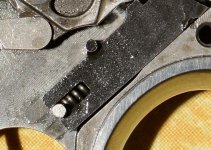Suggest you forego adding the small steel ball to increase tension. Neither necessary, nor a good idea. Probably cause coil bind, & lock up the action.
The rebound spring weight should have little - if any effect on your SA pull weight. Primarily, it is designed to return the trigger, but WILL effect your DA pull weight.
Suggest you try the #14 rebound 1st. Normally it will be heavy enough for a snappy trigger reset, but light enough (used in conjunction w/ the ribbed "reduced power" main spring) to improve your DA pull - over factory.
Some guys use a lighter rebound, but stay w/ the factory main - out of concerns about light firing pin strikes. Never had that problem, personally...
If your current rebound spring seems weak, it may be a factory spring, that has been shortened incorrectly - as opposed to replacement w/ a lighter weight spring.
If your SA pull weight is too light, the fix may well be replacement of "hard parts" (hammer & trigger)- expensive to say the least. Who ever originally "tuned" the action, may have gotten a bit over enthusiastic, w/ the stone. As long as the hammer does not fall from full SA cock - when pushed from behind (follow through or "push off"), you might be better off living w/ the light pull.
Very few S&W revolvers have a SA trigger pull heavy enough to justify modification. There are VERY FEW "gunsmiths" today, that are knowledgeable - & skilled enough to actually improve a S&W revolver SA pull, with out causing problems. Sadly, there are a lot of so called "smiths" out there, that do not realize this.

